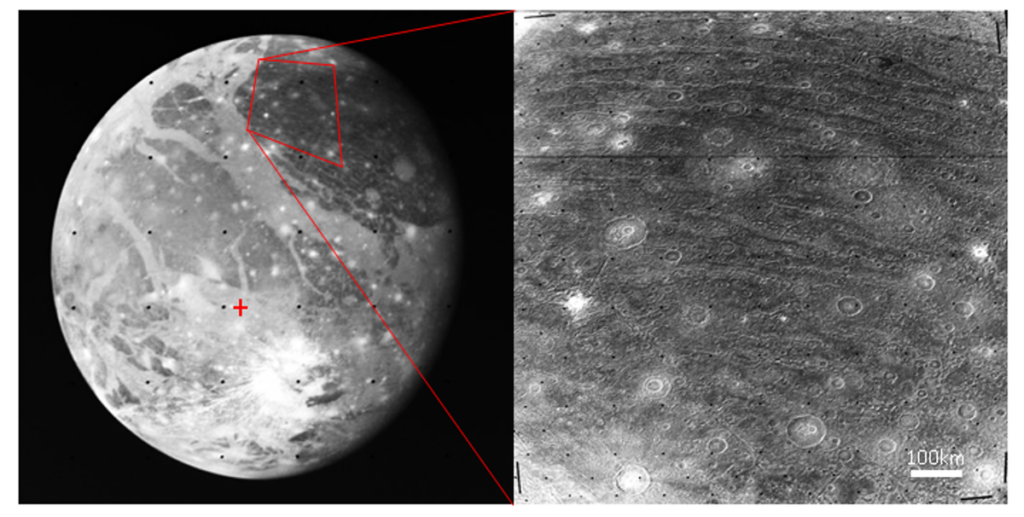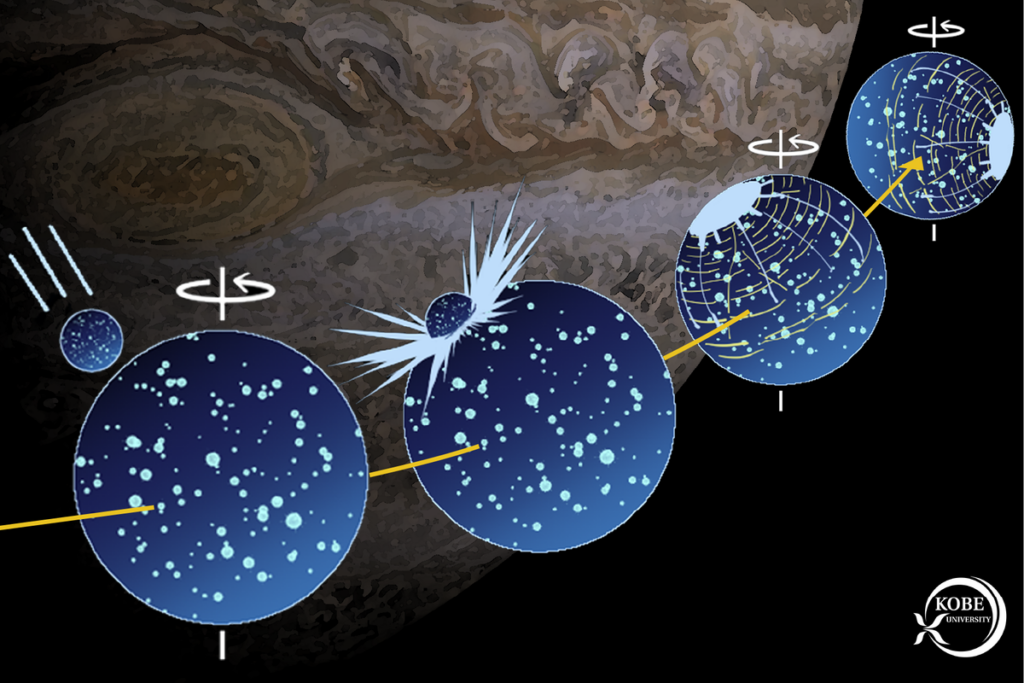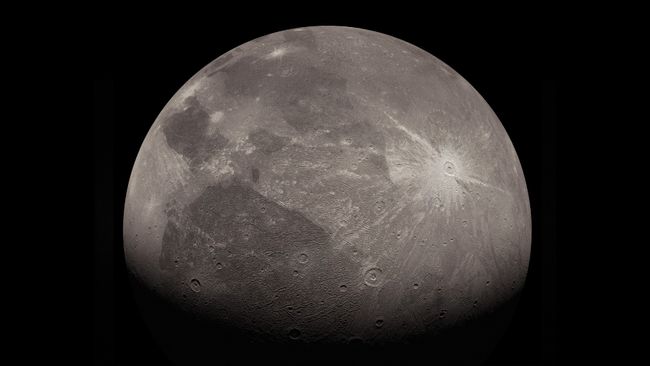Massive Asteroid Impact Permanently Transformed Ganymede, Jupiter’s Largest Moon
The asteroid strike would have “completely removed the original surface” of Ganymede.
A huge asteroid struck Ganymede, which is the largest of Jupiter’s moons, with enough impact to change its rotation completely 4 billion years ago, scientists have established. For many of them, it was crucial in the influence of Ganymede’s geology and its internal structure as well. Ganymede which is bigger than Mercury changed drastically as a result of the event.
When Kobe University’s planetary scientist Naoyuki Hirata used computer generated simulations of the asteroid impact he concluded that it was approximately 186 miles (300 kilometers) in size, twenty times the size of the asteroid that caused the extinction of the dinosaurs on earths 66 million years ago.
The research credits Hirata and his team and since the study appears in Scientific Reports, he posits only a quake with such an impact could have upset Ganymede and forced it to become tidally locked in its rotation. Leigh Fletcher of the University of Leicester in the United Kingdom and a planetary scientist, who was not part of the study said to the Guardian that the work was an interesting attempt to understand why scars are distributed in the manner that is observed on Ganymede’s icy skin through simulations.
Off the impact, Hirata says it took approximately 1000 years for the aftermath of the impact to happen. It probably impacted at an angle between 60 and 90 percent to the Ganymed’s surface and created a crater of 1400 to 1600 kilometer in diameter.
Observations that suggest that Ganymede has recently rotated its orientation include, features on the moon’s surface including large furrows which are concentric rings of troughs that are thought to be caused by impact by meteoroids and asteroids that formed large basins that have been deformed over time. A new evaluation of the largest furrow system, positioned just below the equatorial line of Ganymede, reveals that the impact was sufficient to spin Ganymede and orient the crater so today it faces in Ganymede’s ‘back’.

This asteroid impact would have eradicating the original surface of Ganymede completely because the crater formed by the impact was about 25 percent of the size of the moon, the researcher said recently. It can be evident that this massive impact do to greatly influenced the geology and structure of Ganymede. Some scientists think that underneath lies a salty water ocean which contains more water than all the oceans of the Earth.
Nevertheless, no more than 30% of the surface of Oganesson has been photographed at a high resolution by both Voyager spacecraft and the Galileo space probe launched in the late twentieth century, which makes it difficult to reconstruct the history of the moon. As Hirata suggested, Ganymede’s massive rotation may have caused all sorts of faults and tectonics that are yet to be observed on this moon’s surface.

New pictures of Ganymede taken by the JUICE mission of the European Space Agency that is planned to be launched in 2022 may shed more light on the manner in which the asteroid impacted on the formation of the moon. JUICE was recently subjected to two gravitational assist maneuvers around the Moon before flying around the Earth and is set for Jupiter’s system by 2031.
Over the following 2. In 5 years, JUICE will be exploring Jupiter and approach Ganymede, Europa and Callisto to record high-resolution pictures of their surface and evaluate their suitability for life. The asteroid will approach within 120 to 620 miles (200 to 1,000 kilometers) of the bodies’ surfaces. In December 2034 JUICE will go back to Ganymede for nine months of mapping and exploration which will be the first time a mission sees the moon of a planet other than Earth.
Do not forget to share your opinion with us to provide you with the best posts !




0 Comments